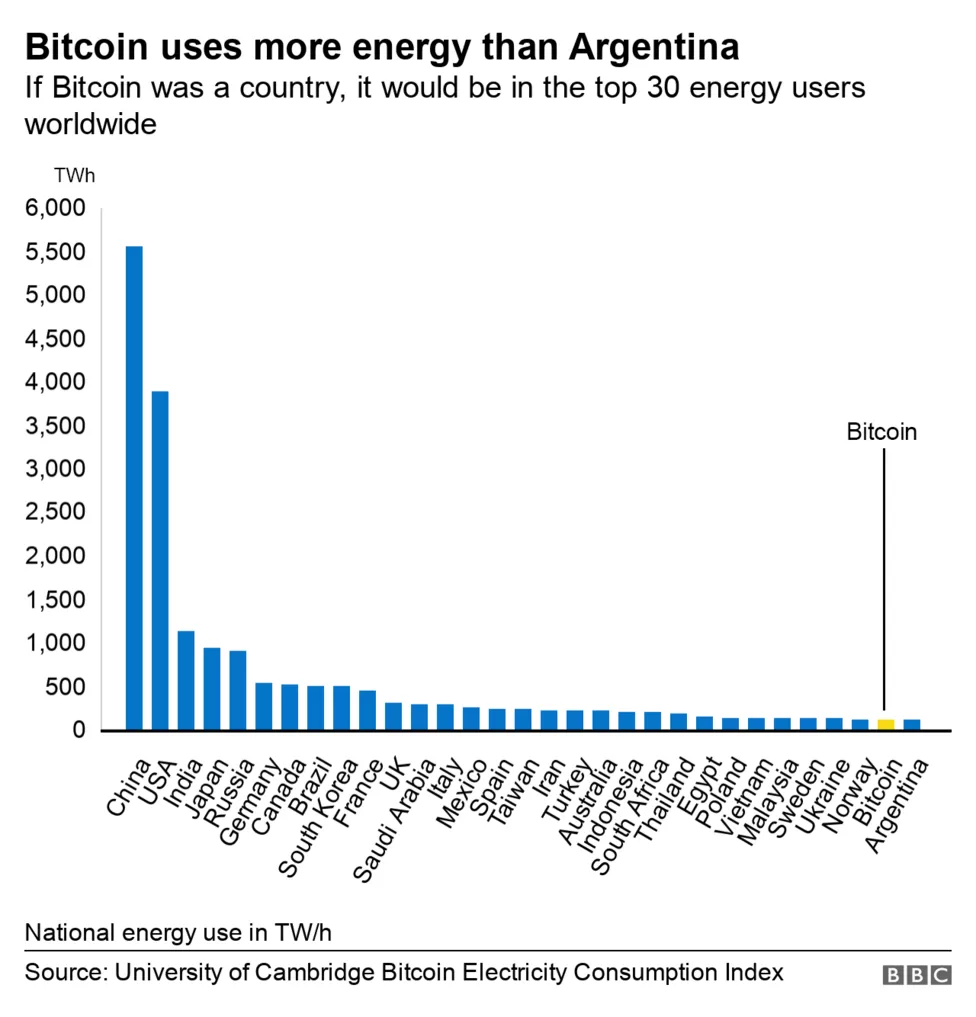Is Bitcoin bad for the environment?
Opinions expressed by Contractor the contributors are their own.
Cryptocurrency’s failure is not only its declining economic losses over the past year, but also the devastating effects that digital currency has had on our planet.
Why is it bad for the environment? Very simply, the amount of energy needed to run crypto puts millions of metric tons of carbon into the air. The worst cryptocurrency of them all is Bitcoin, the original form of crypto and the largest.
To put some numbers into perspective, each Bitcoin transaction currently uses 1201.34 kWh of electricity. This is equivalent to an average American household’s electricity consumption over 41.8 days. When you look at the figures for energy required for Bitcoin mining over the past twelve months, it is more than the amount of electricity Argentina has consumed in a year, according to a study by the Cambridge Center for Alternative Finance.

The mining problem
The root of crypto’s eco-damage stems from Bitcoin mining – but it’s not the kind of mining you think. Mining for fossil fuels involves heavy machinery, digging, a lot of physical labor and logistics. Bitcoin mining is as easy as turning on a computer server.
Its easy availability can turn any mortal into a miner in minutes (and a few complex processing servers that cost thousands of dollars each).
Related: How a savvy entrepreneur built the first home heater that mines Bitcoin
The decentralized currency relies on the community competing to solve complex mathematical equations using a large network of computer servers. Each server competes to be the first to come up with the solution, but there can only be one winner. It’s a race against time, where the server’s owner is rewarded in Bitcoin for each correct answer.
But the overall effect of this attention on carbon emissions is huge. According to reports, the production of Bitcoin emits almost half a ton of carbon dioxide during each transaction. This sheer volume of emissions alone would require 300 million trees to be planted to offset this amount of CO2.
It’s no wonder why nine countries have banned crypto production. With China out of the picture, the US has become the top Bitcoin miner.
Related: Crypto’s Sojourn to Green
Many Bitcoin miners are taking up derelict coal plants that were in financial turmoil and putting them to use, which is having harmful effects that prompt Greenpeace to start campaigning for a change. Kentucky has bolted first to the finish line as if it’s a race for the roses as a result of tax incentives.
The Bitcoin industry even has a marketing slogan. “Change The Code, Not The Climate” is an initiative launched earlier this year that emphasizes that the world can still exist with cryptocurrency and a healthy climate.
What is the solution?
Not all cryptocurrency is a threat to the environment. For example, Ethereum, the second largest form of crypto, recently took a friendly approach to production. Moving away from Bitcoin’s proof of work model, Ethereum’s proof of stake production involves far less computing power, consuming just 0.02 kWh per transaction.
But as long as Bitcoin mining remains profitable, we need to implement initiatives that will also make it sustainable. Learning from other currencies, such as Etherium, could be the holy grail of how we can reverse the effects of climate change while paving the way for a greener future, where cryptocurrency and a healthy environment can coexist.
Related: Bill Gates says refusing to eat meat won’t really affect the climate crisis


